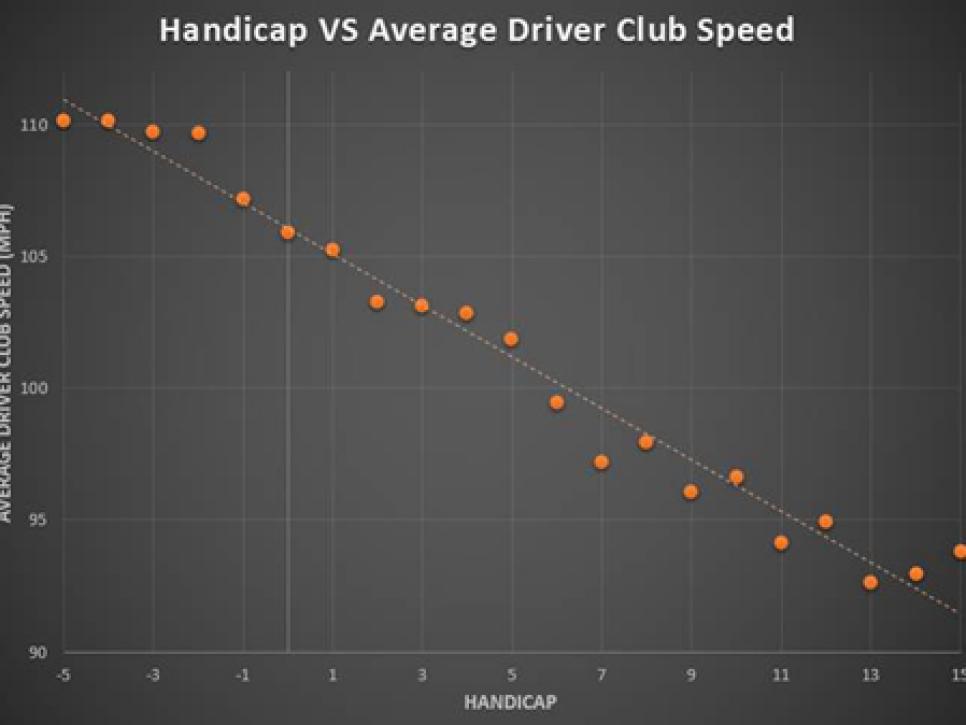News
Fitness Friday: Your clubhead speed (fantasy vs. reality)
A time-honored tradition in golf is to make driving-distance claims well beyond your capability. Sure, there was that time last June that you hit a sprinkler head on a downwind, downhill hole and your ball ended up inside the 100-yard marker on that 350-yard par 4. But let's be honest, most golfers aren't carrying the ball 250 yards off the tee. Most aren't carrying it 200. And it has little to do with your current fitness level, says Justin Padjen of TrackMan Golf (@trackmangolf).
Rather than look at a person's physique, athleticism or strength, a more accurate determiner of how far you hit the ball is your Handicap Index, he says. And he's got proof. Padjen's company has the data on driver swings of more than 15,000 golfers of all skill levels (including close to 300 PGA Tour and LPGA Tour players). What they found is a direct correlation between swing speed and handicap (see the chart below). The average Handicap Index for a man is currently 14.6, according to the Golf Handicap and Information Network (ghin.com). Padjen says data strongly suggests those golfers typically swing the driver at 93.4 mph, carry the ball 192 yards, and drive it 214 yards including roll. Sobering news, right?

If you're not familiar with TrackMan, the company developed a type of radar system that can tell you exactly how fast you're swinging and how far you're hitting the ball. It does a lot more than that, but for the purposes of this article, swing speed and distance were of primary interest.
"The data shows that there are very strong correlations between club speed and skill level," Padjen says.
And when you think about it, that makes sense. The better you get at golf, the better you understand what it takes to deliver the clubhead into the ball at higher speeds. So when it comes to training in the gym to hit the ball farther, learning how to swing the club faster only matters if you have a good understanding of how to make a consistently effective swing at that speed.
Most amateurs would be better served in the gym learning how to improve muscular coordination versus trying to train to swing faster. This past summer, I talked to one of the best drivers on the PGA Tour--Hunter Mahan--about what holds amateurs back. He has played with his fair share of regular golfers in pro-ams all over the world. Mahan, who is among the best on tour in combining distance and accuracy off the tee (a stat known as total driving), says he sees uncoordinated swings that make it difficult to hit the ball in the center of the clubface.
"Solid contact beats a fast swing almost every time," he says. "The closer amateurs can get to hitting it in the sweet spot, the more distance they will get."
So how do you improve muscular coordination to learn how to hit the ball farther. There are a lot of ways, but one simple exercise is to simulate a golf swing while throwing a medicine ball. Here you will see PGA Tour fitness trainer Jeff Fronk (@fitnessbyfronk) and tour pro Bud Cauley (@budcauley) demonstrate it (click on the video below).
[Ljava.lang.String;@57f1263c